Dùn Èideann

Auld Reekie, the fairytale capital of Scotland

What a great place Edinburgh is, as well as being the capital of Scotland it’s full of people from all over the world. A perfect example of this is Edinburgh University where fewer than half of the students are native to this land. Edinburgh is a tourist’s dream, it has fairy tale winding streets, dungeons and a castle, not to mention the traditional pubs, monuments and local folklore stretching back hundreds of years. It also has quality restaurants, art galleries, museums and hotels to rival any other European capital. Famous for the Edinburgh Festival during the summer, and its Hogmanay street party at New Year, it is a vibrant and beautiful city, in spite of the weather.
Some of my roots are from Edinburgh, the Athens of the North, and despite having only lived there for a couple of months throughout my whole life I do tend to find myself there every time I’m back in Scotland. A genuine pleasure to visit at any time of year, could there be a greater city anywhere else…?
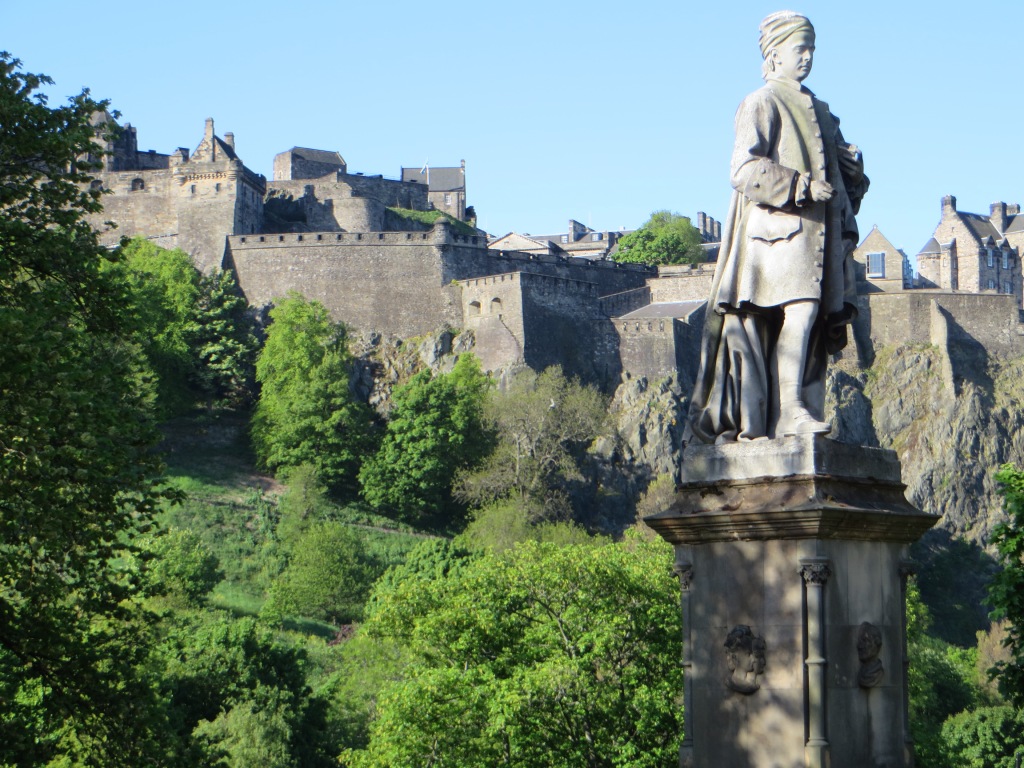
Edinburgh Castle is said to have been founded around 600 AD. Built on a volcanic neck, the solid core of an ancient volcano, the castle was one of the best protected in Scotland during the wars of independence. Yet is has been besieged many times, held by the English and nearly demolished on more than one instance. It was here that the King of Scotland sat, and it was here that Mary, Queen of Scots gave birth to James VI of Scotland, who united the crowns of Scotland and England in 1603.
Edinburgh’s Old Town is one of the best preserved medieval cities in Europe, now well revived since the days of its dank and overcrowded reputation prior to the 1700s. Such was its condition that construction of the New Town started in 1759 when the Nor’ Loch was drained to make way for Waverley Station. The Old Town is stacked and dense along the Royal Mile, with a number of subterranean streets buried and bricked up for generations, perhaps most famously Mary King’s Close.
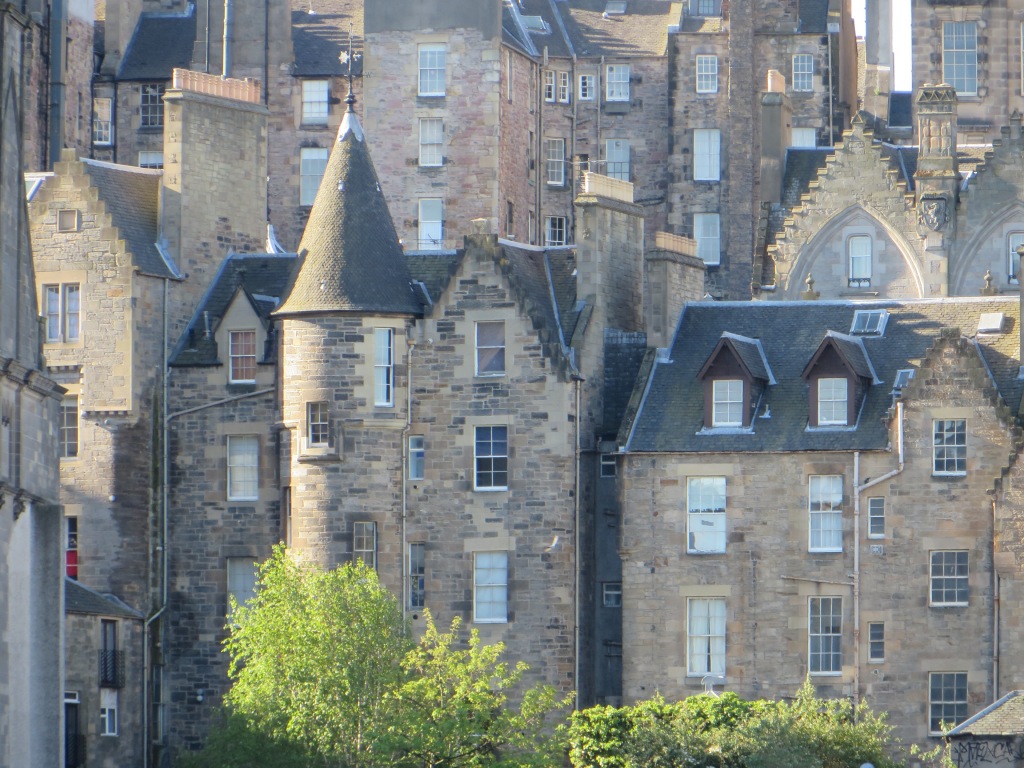

It is said that Princes Street is the most beautiful street in Europe, with its cultivated gardens, views of the castle and of the Old Town. Let me assure you that the weather is always like this.
The Scott Monument was built to the memory of Sir Walter Scott, the novelist, poet and playwright. You can climb the narrow steps inside to the observation deck at the top, for a sky-high fee.
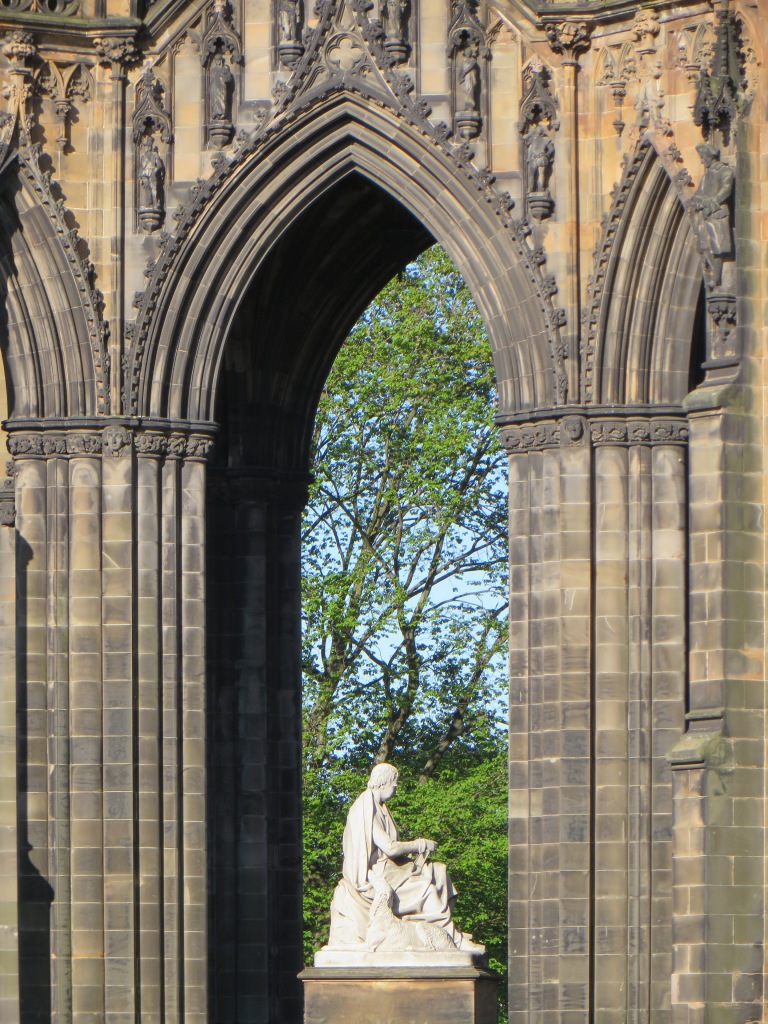
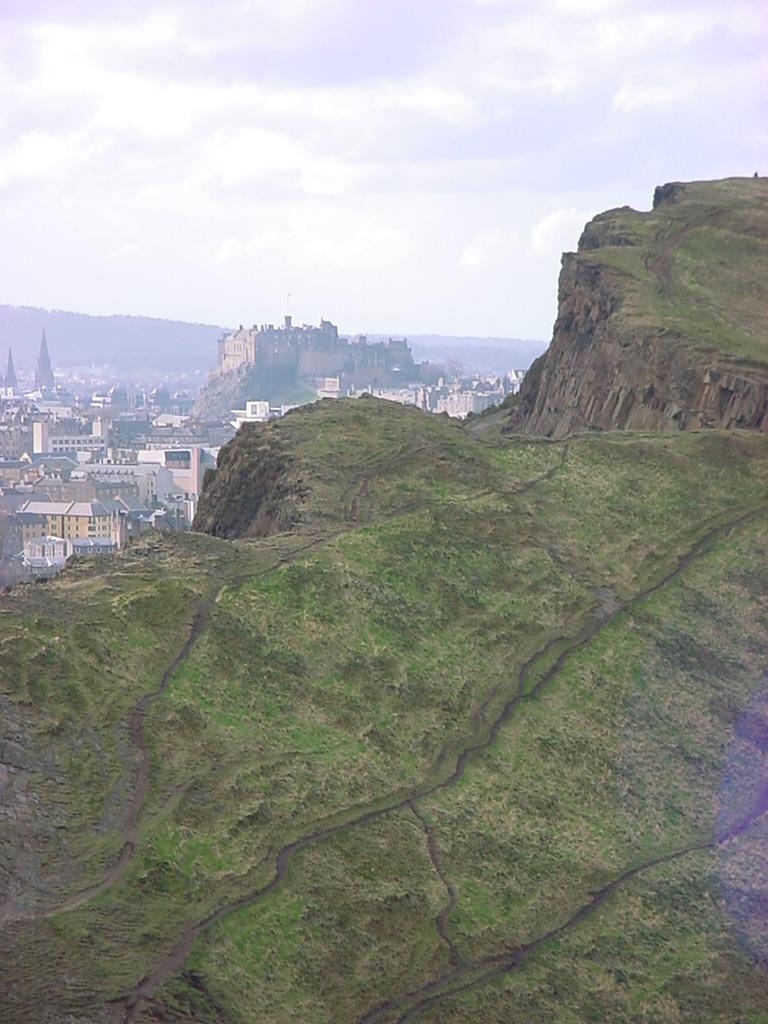
Mons Meg, a 6 tonne battle cannon which sits in Edinburgh Castle, was presented to King James II in 1457 and used against the English to good avail. The weighty projectiles were often found up to two miles away. It was last fired in salute in 1558 when the barrel burst.
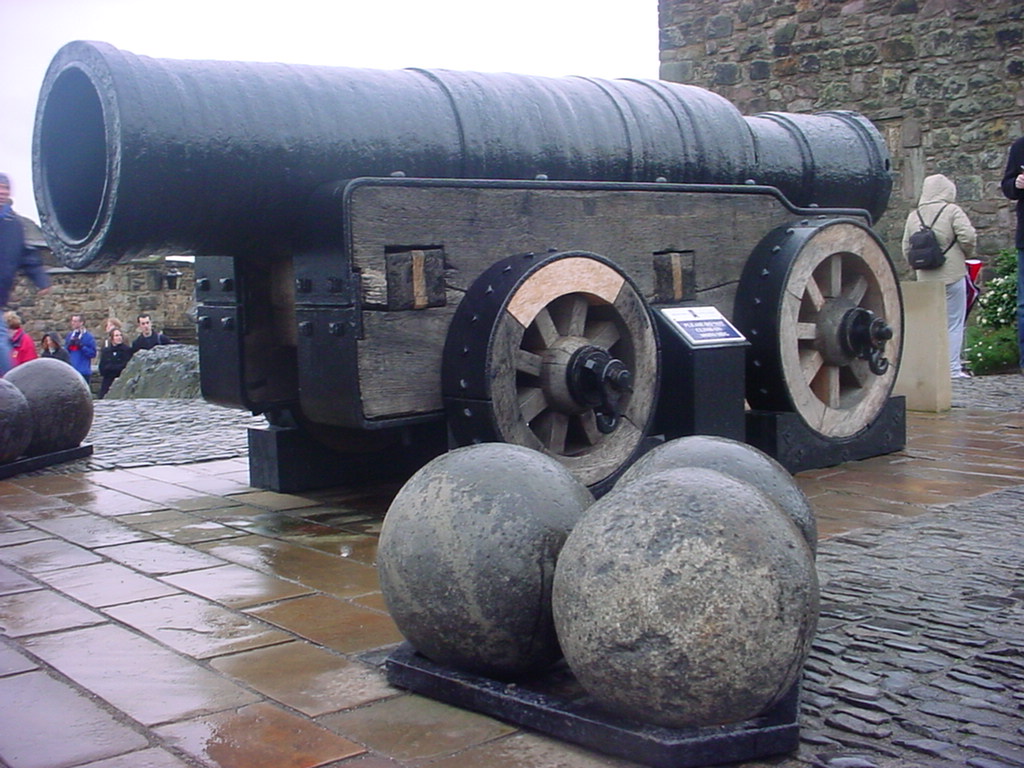
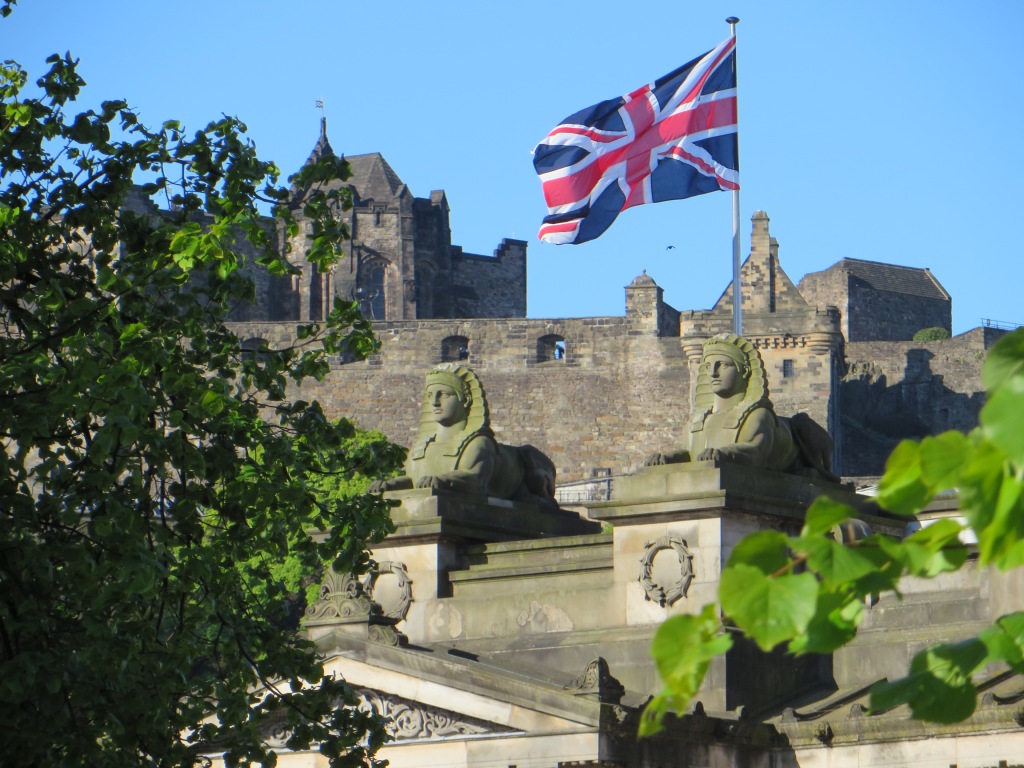
The National Galleries of Scotland on The Mound flies the Union Flag above Sphinx-like statues. The National Gallery displays fine art from Scotland and around the world, and like all museums in Scotland, is free to enter.
South of the centre of town lie The Meadows, a large green space which was once a loch. It was here that golf was first played, on Bruntsfield Links, and during sunny days The Meadows make a great place to hang out.

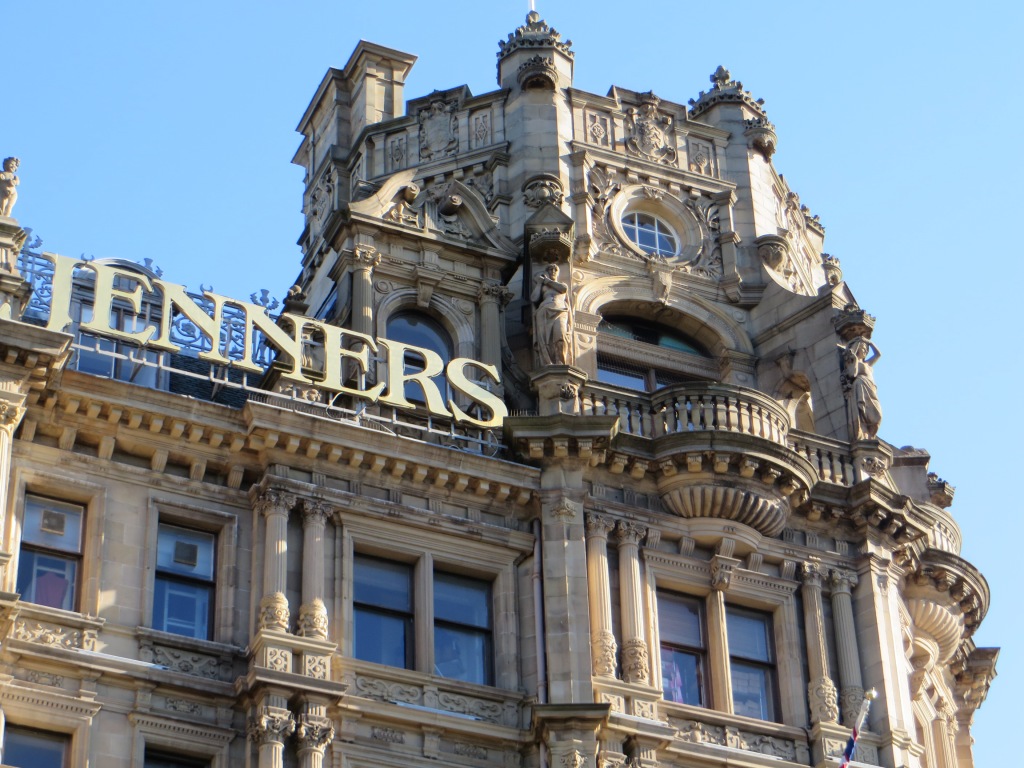
Jenners is an Edinburgh institution, being to Edinburgh what Harrods is to London. Be prepared to part with some serious readies if you want to shop in here!
Scotland gained a devolved government in 1999 with the reconvening of the Scottish Parliament, last in session in 1707. As part of this devolution, a new parliament building was erected at Holyrood, designed by Catalan architect Enric Miralles. The completed structure was ten times over budget at £414 million. Worth it? You decide.


Outside the Parliament even the bike racks are fancy, designed in such a way that four of the twisty posts when viewed from a certain angle give the illusion of a bike. Pretty clever.
The winding streets of Edinburgh’s old town are exemplified in Victoria Street, a picturesque split level crescent winding down from George IV Bridge to the Grassmarket.

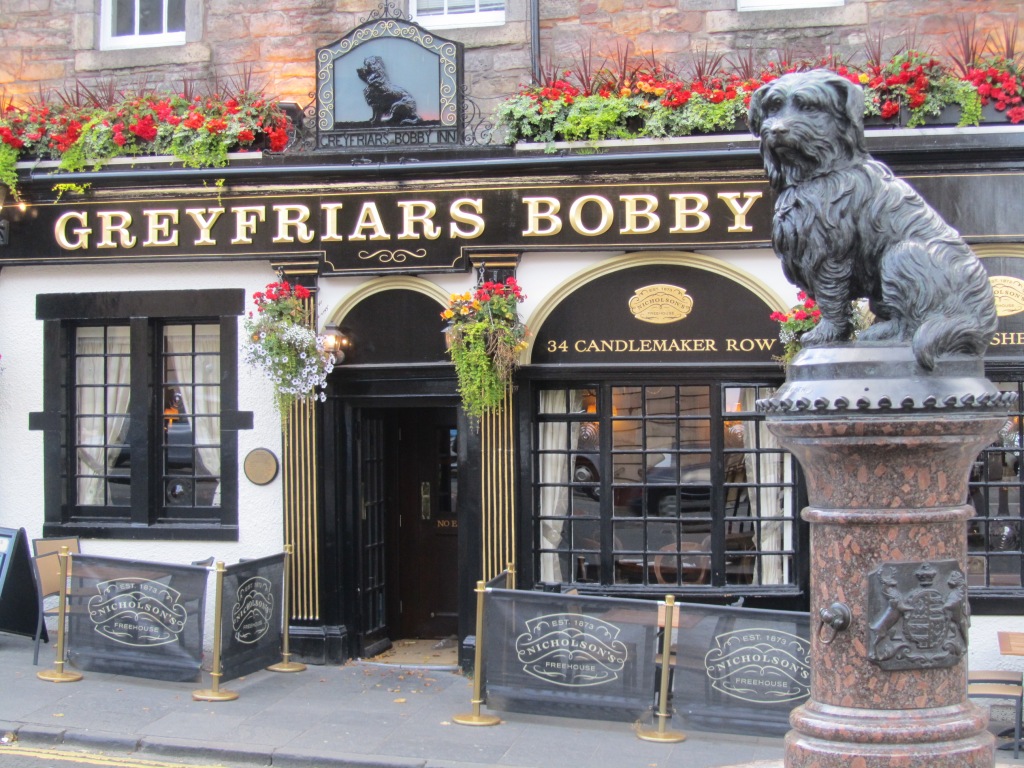
Greyfriars Bobby famously sat for fourteen years upon his master’s grave in Greyfriars Kirk, and is today immortalised in effigy outside his eponymous pub. There is a similar story and statue of the faithful dog Hachiko, at Shinjuku Station in Tokyo.
The mighty rail bridge from Edinburgh to the north was built around 1890, and is uncommonly cantilever in design; extremely strong but very expensive. It is an icon of Scottish engineering and well-known around the world. In 2015 it became a Unesco World Heritage Site.
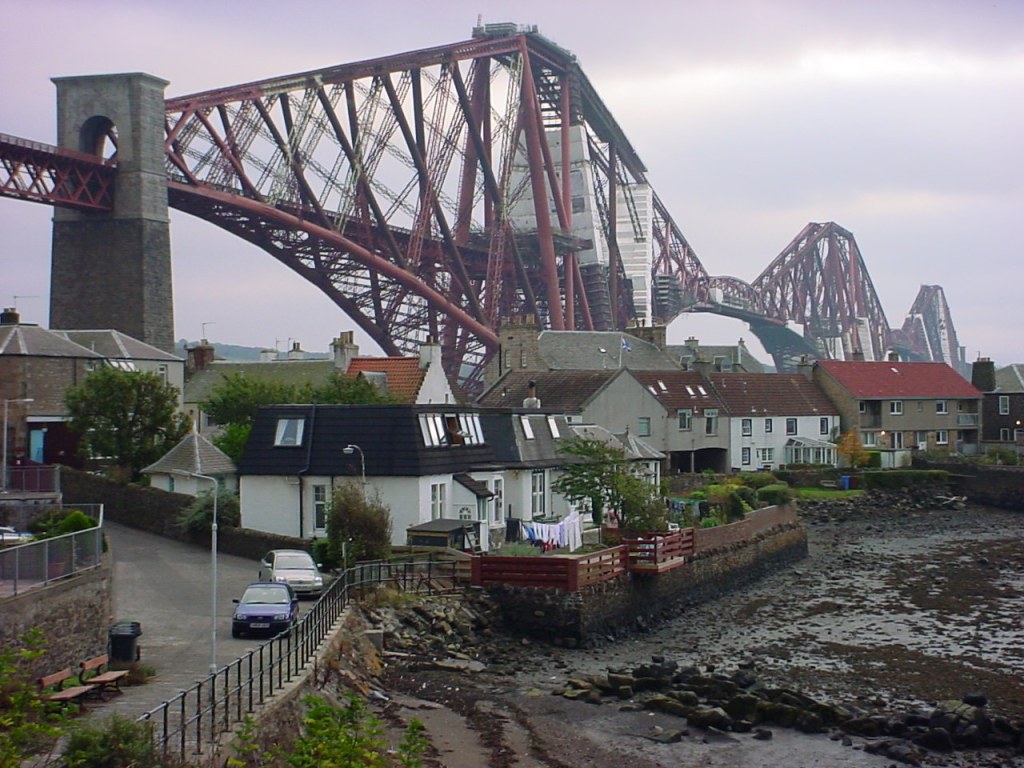

The Firth of Forth is also crossed by a suspension road bridge alongside the rail bridge. The Forth Road Bridge was opened in 1964 but developed problems due to the excessive weight of traffic crossing it daily. A third Firth of Forth crossing construction commenced in 2013.
Created 2001 | Updated 2015
